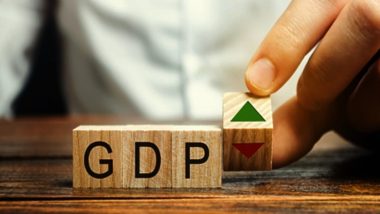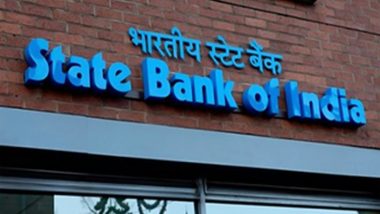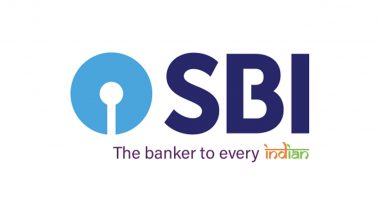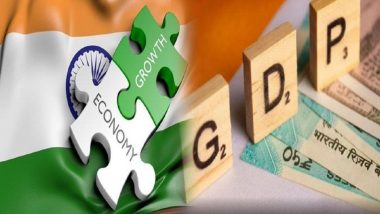Mumbai, May 25: The country's GDP is likely to grow at 1.3 per cent in the fourth quarter of 2020-21 and may see a contraction of around 7.3 per cent for the full financial year, according to an SBI research report 'Ecowrap'. The e-National Statistical Office (NSO) will release the GDP estimates for the March 2021 quarter and provisional annual estimates for the year 2020-21 on May 31.
"Based on our 'nowcasting model', the forecasted GDP growth for Q4 would be around 1.3 per cent (with downward bias) as against NSO (National Statistical Office) projection of a negative (-)1 per cent," the research report said.
"We now expect GDP decline for the full year (FY 2020-21) to be around 7.3 per cent (compared to our earlier prediction of minus 7.4 per cent)," it said.
State Bank of India (SBI) has developed a 'nowcasting model' with 41 high-frequency indicators associated with industry activity, service activity, and global economy in collaboration with State Bank Institute of Leadership (SBIL), Kolkata. Gold Declines Rs 102 to Rs 48,025 Per 10 Gram, Silver Also Tumbles Rs 269 to Rs 70,810 Per Kilogram.
The report said that going by the estimate of 1.3 per cent GDP growth, India would still be the fifth-fastest-growing country among 25 nations that have released their GDP numbers so far. It said one likely consequence of any upward revision in FY21 estimates is a concomitant decline in FY22 GDP estimates.
"Our estimates now indicate that there might be nominal GDP loss of up to Rs 6 lakh crore during Q1 FY22 as compared to loss of Rs 11 lakh crore in Q1 FY21," it said.
Real GDP loss would be in the range of Rs 4-4.5 lakh crore and, hence, real GDP growth would be in the range of 10-15 per cent (as against RBI forecast of 26.2 per cent), it said.
The research report further said both deposits and credit of all the banks declined in April and May. However, the trend in deposits has changed from FY21. Deposits had increased by a staggering Rs 2.8 lakh crore in 2020-21; and in the current financial year, it has already increased by Rs 1 lakh crore till May 7. "The interesting point to note is that deposits have shown alternate periods of expansion and contraction in FY22 in the first three fortnights," it said.
According to the report, it is possible that such expansion, followed by contraction, could indicate household stress as people getting salary credits in the first fortnight are withdrawing it in the second fortnight for health expenses. They are also stocking up currency for precautionary motive and an uncertain scenario, and the trend continues. HRS hrs













 Quickly
Quickly





















